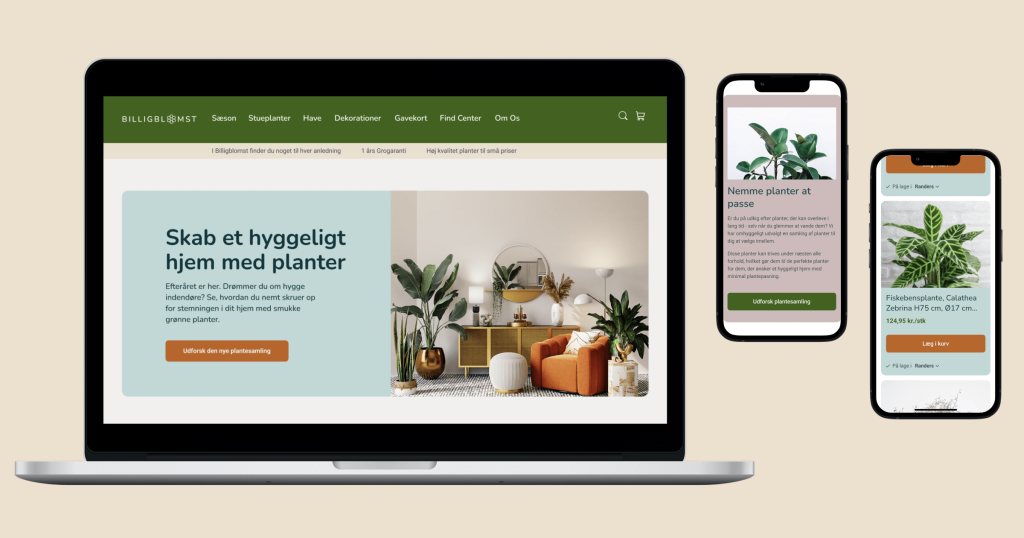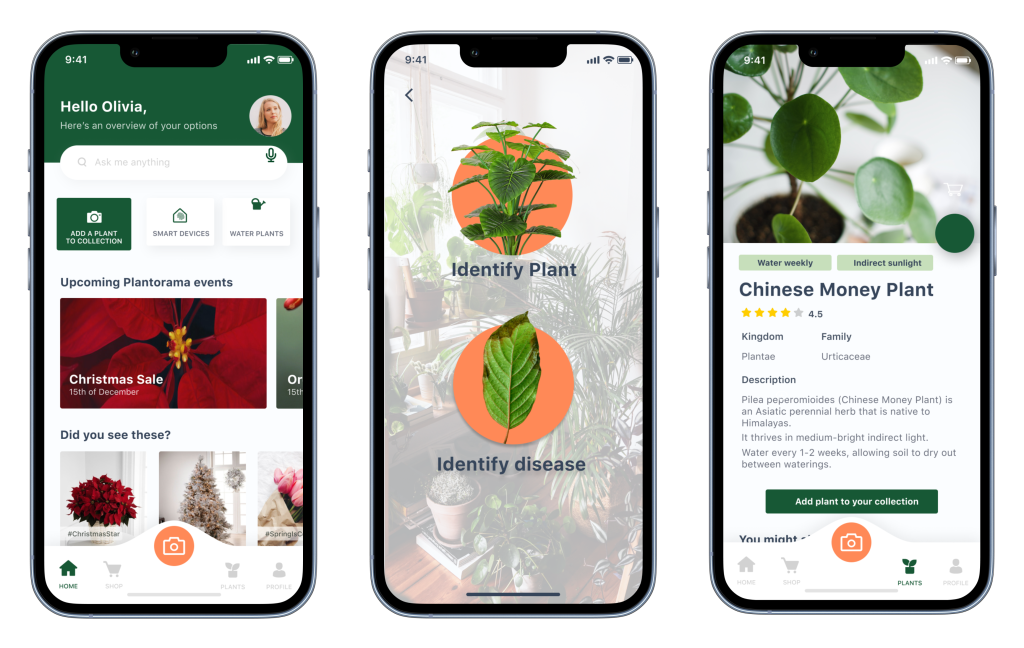Morningscore
Designing a gamified app for SEO beginners that leverages gamification and motivation theory to keep users engaged and motivated in their learning journey.
Bachelor Thesis Project
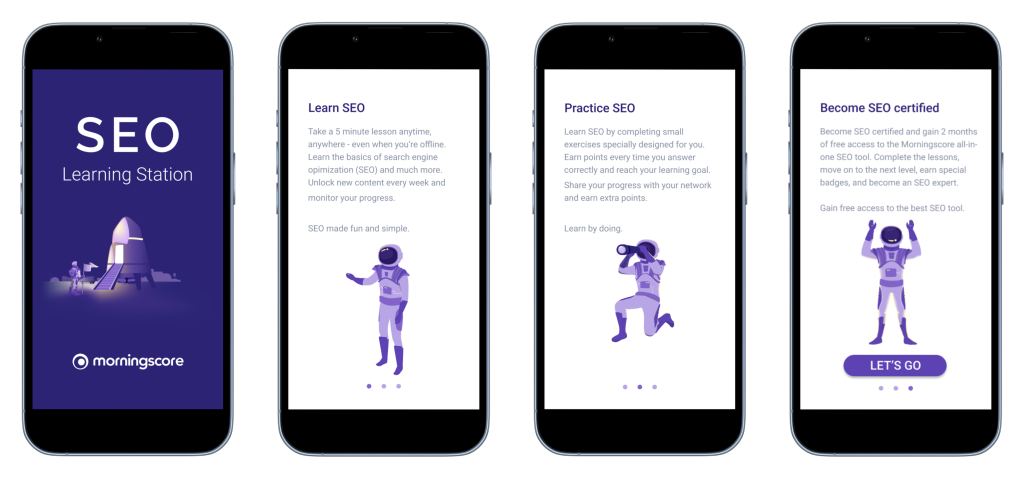
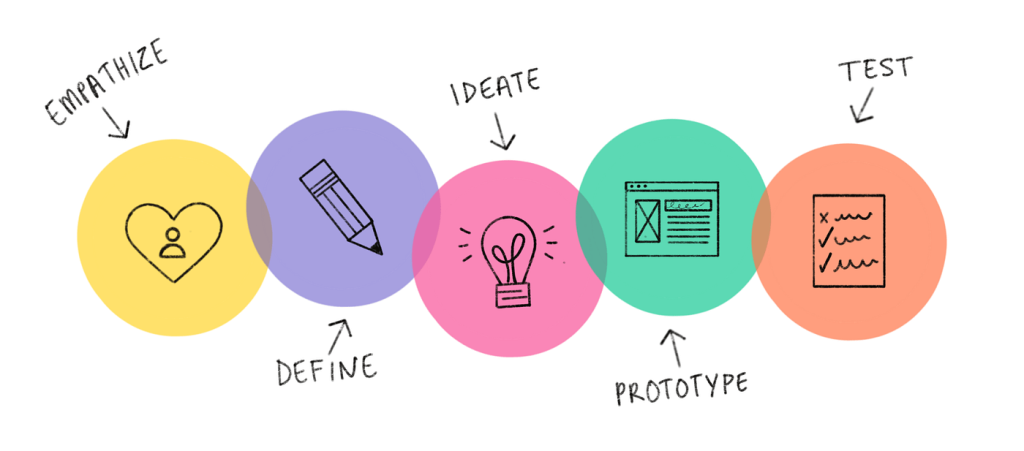
Type of project: University UX design project – BA thesis
My roles: UX Designer, User Researcher & Project Manager
Tools used: Figma, Miro, Hotjar, Google
Drive, Zoom, pen & paper
Duration: 5 weeks (2 weeks of user research, 2 weeks of UX design, 1 week testing and delivery) – October 2021
Project Overview
The Client
Morningscore is a SaaS Danish company providing an all-in-one, gamified SEO tool for website optimization.
Designed for beginners and small businesses, the tool is user-friendly and engaging. However, users should have a basic understanding of SEO and its specific terms to optimize their website effectively.
Problem Statement
Morningscore faces challenges in simplifying SEO explanations for complete beginners, as the subject can be overwhelming for those with little prior knowledge.
Research questions:
- How can Morningscore make SEO learning engaging and efficient for beginners, avoiding information overload?
- What strategies can Morningscore employ to attract and convert SEO novices into loyal customers, effectively onboarding them into the Morningscore tool?
Solution – Outcome
Introducing the SEO Learning Station, a gamified app by Morningscore designed for SEO education.
Users earn points upon completing SEO lessons, which can later be redeemed for a valuable reward: 2 months of free access to the Morningscore SEO tool. This feature effectively converts app users into potential customers.
Furthermore, users who complete all levels and lessons also receive SEO certification, a prestigious recognition within the SEO and digital marketing communities.
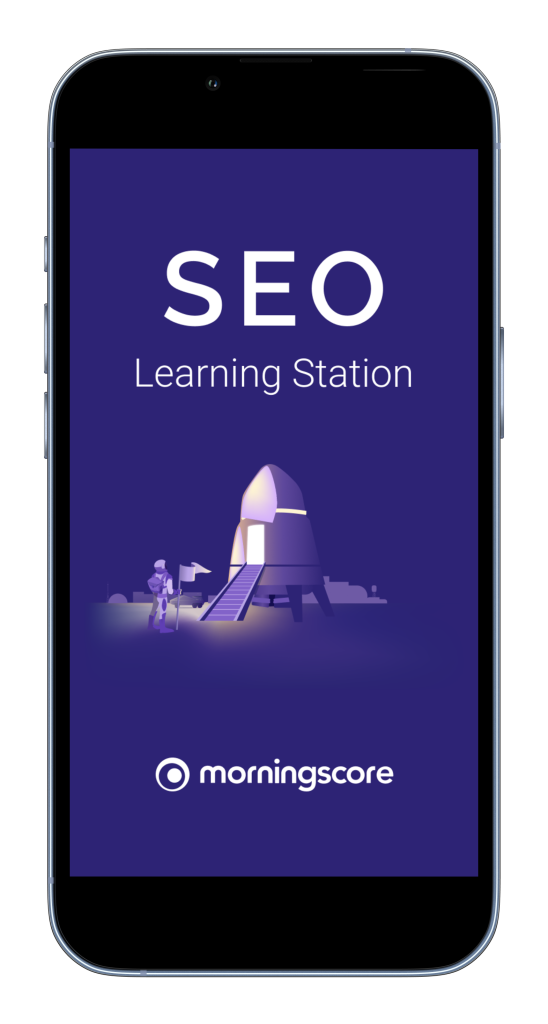
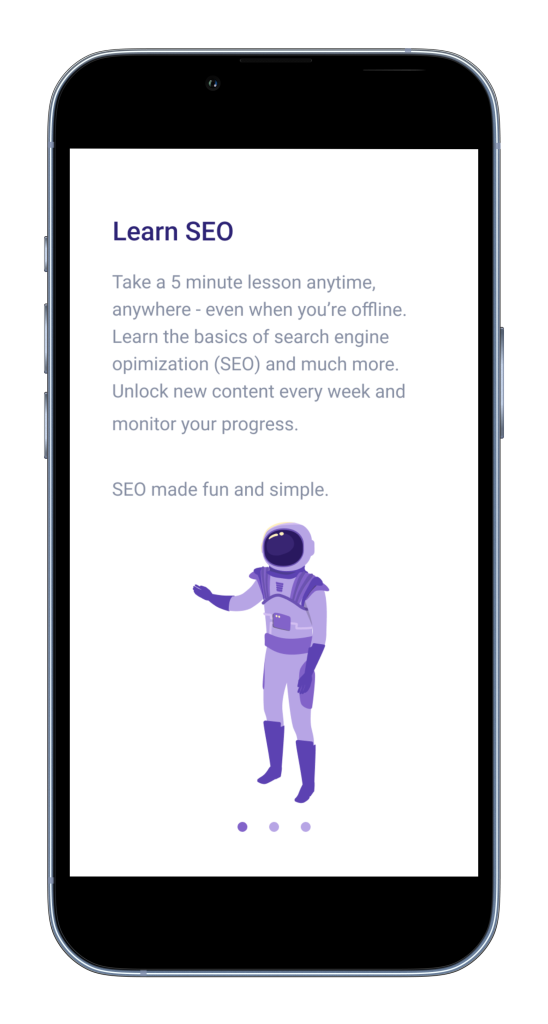
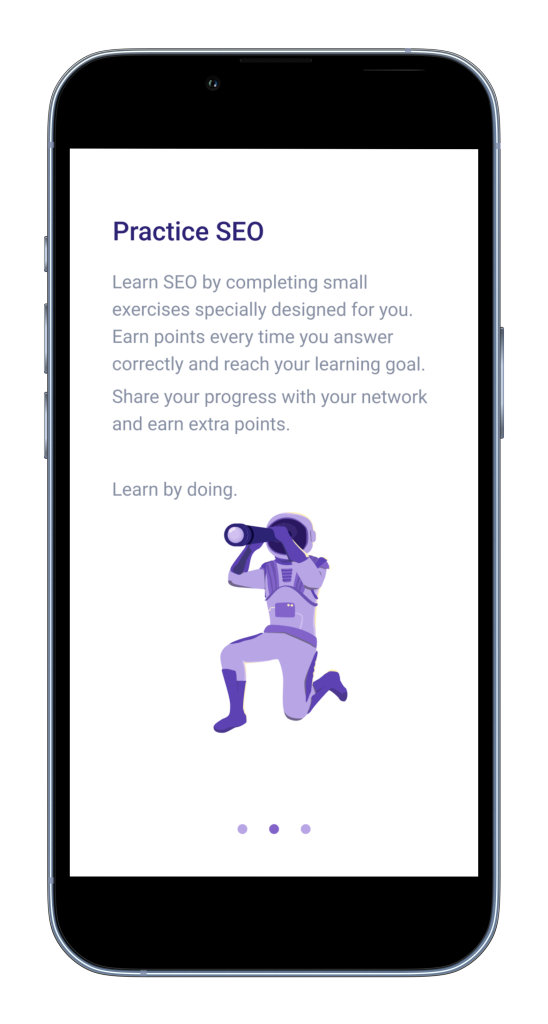

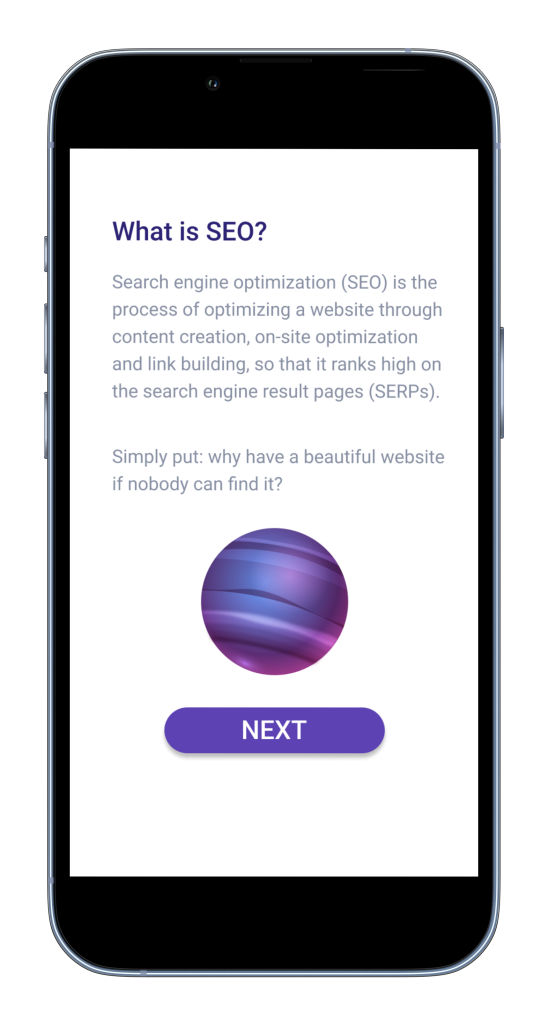

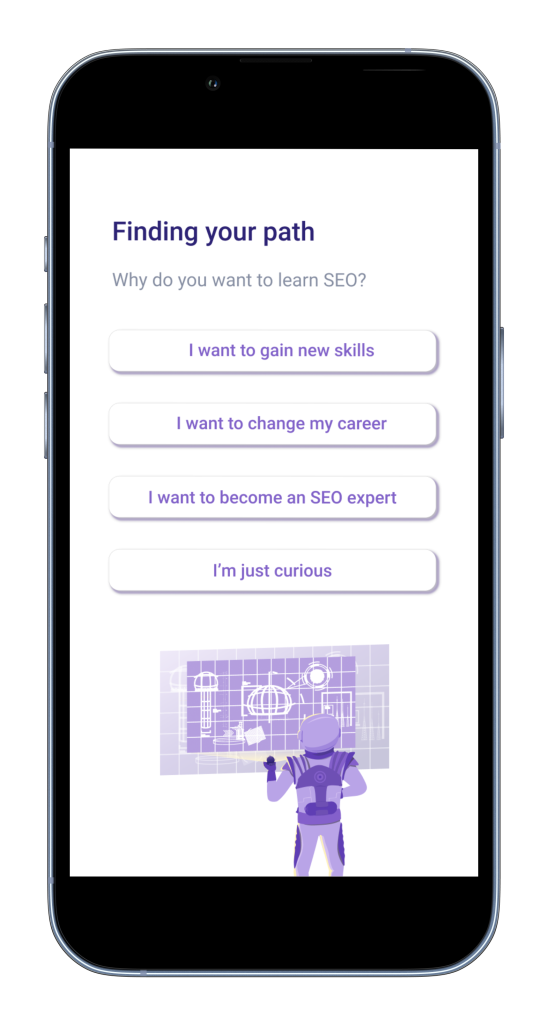

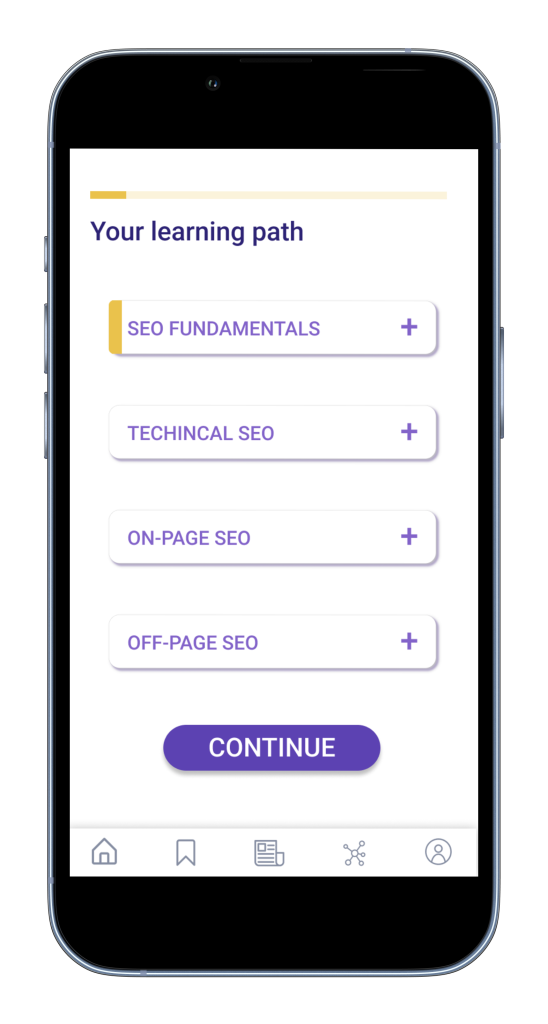
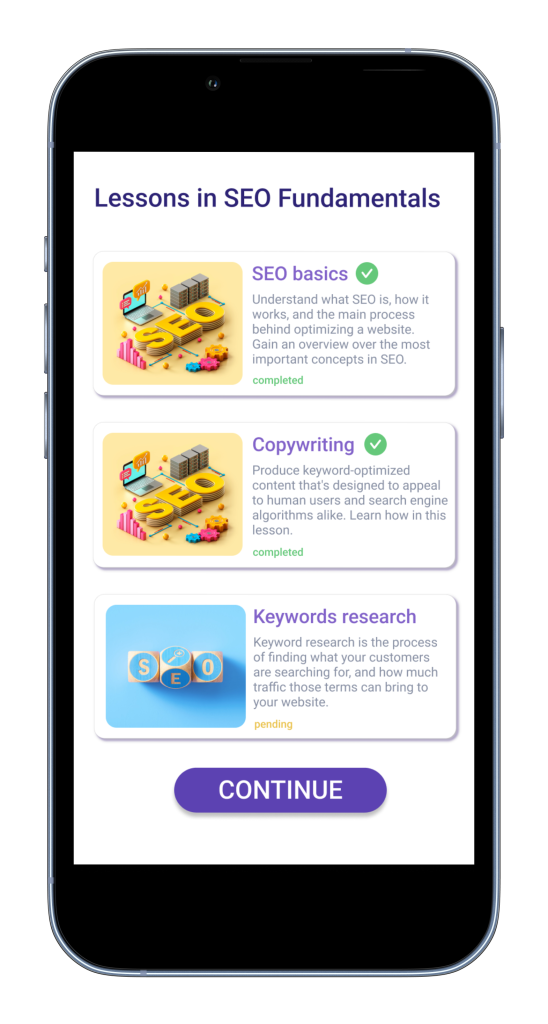
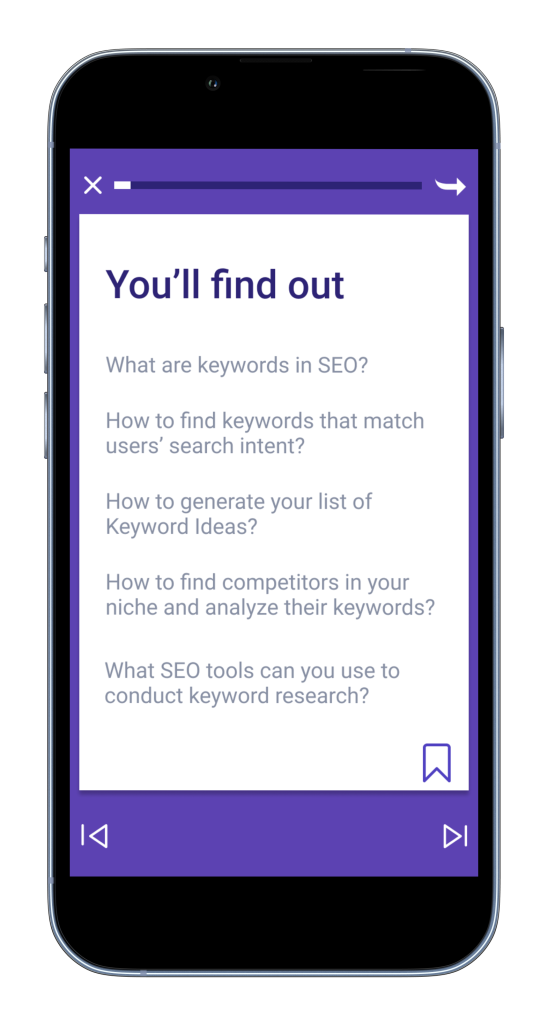
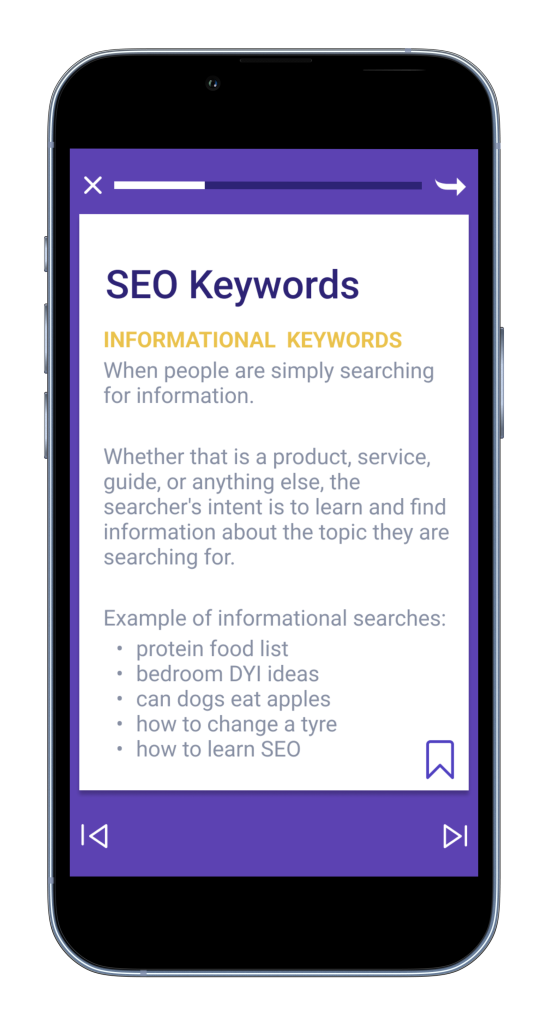
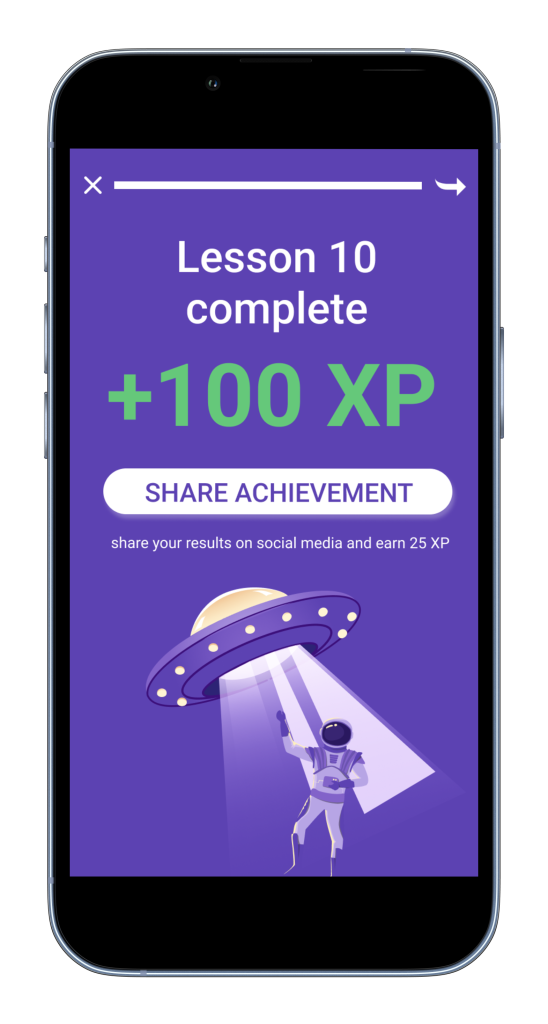
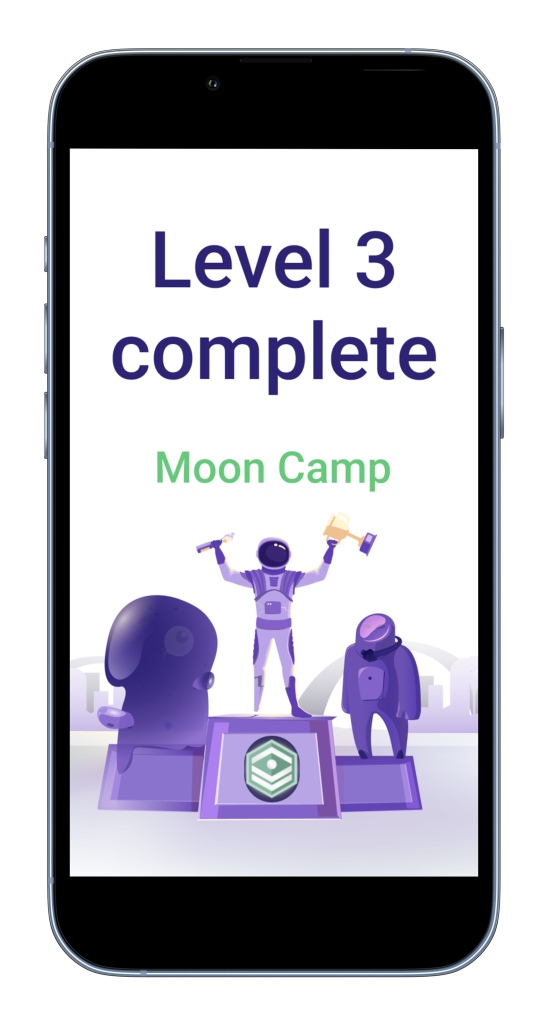
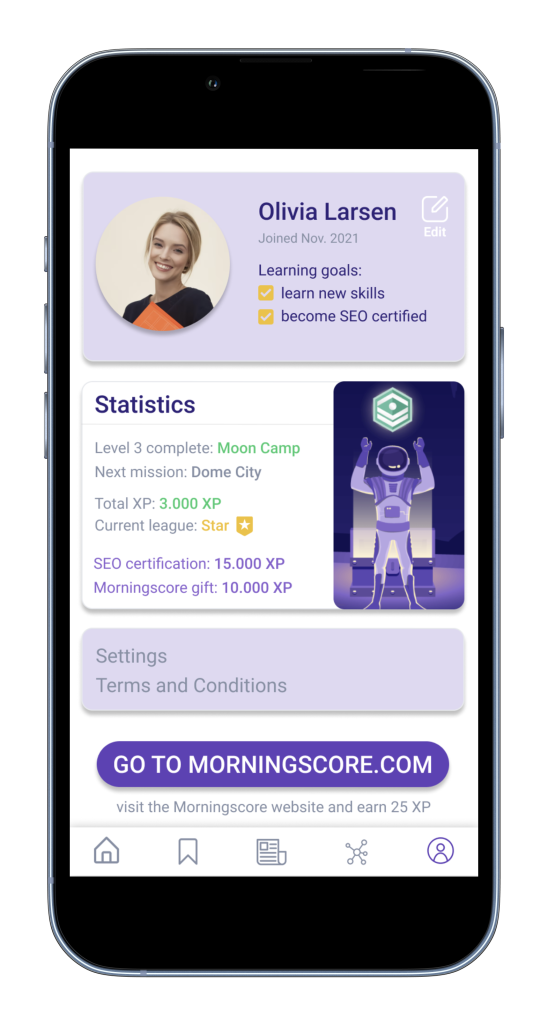

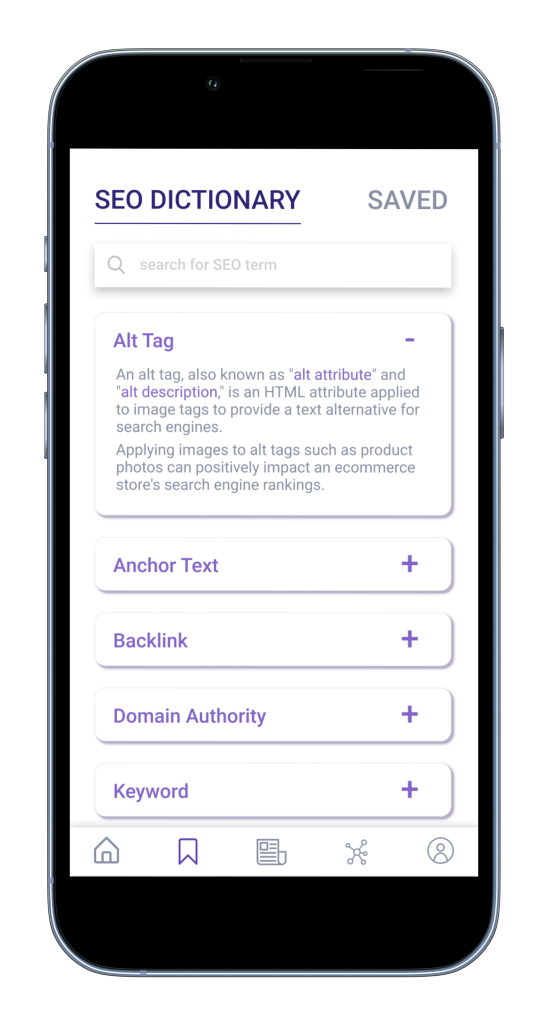
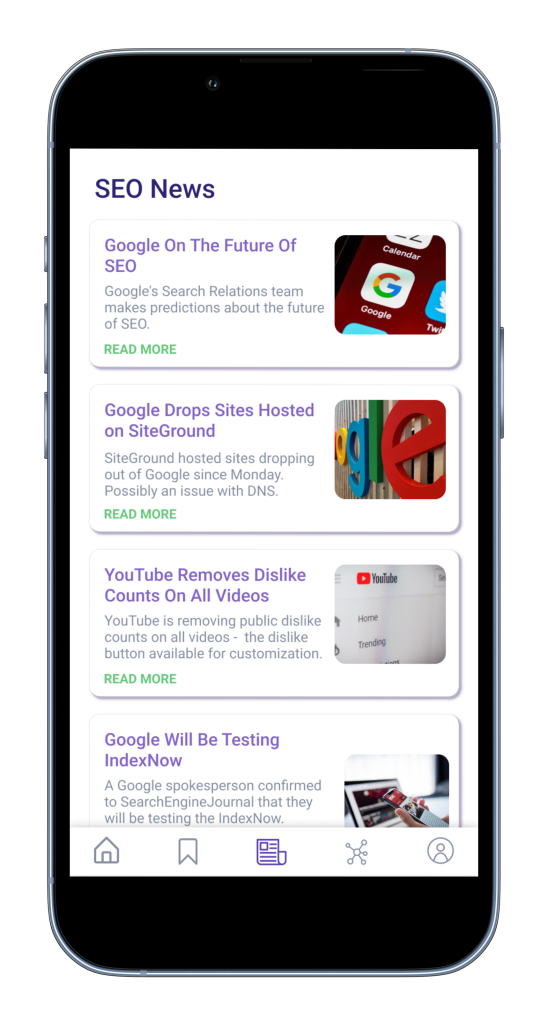
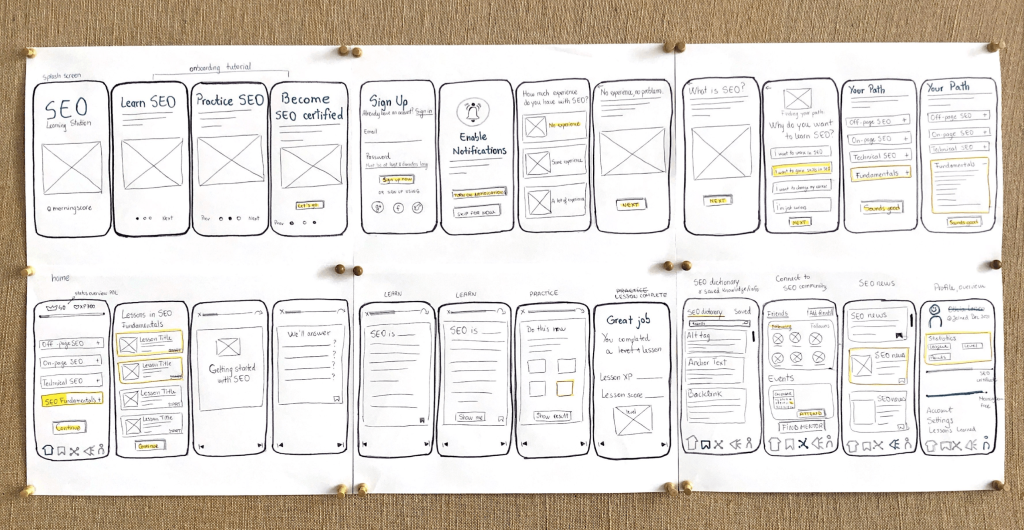
The Design Process
The new Morninsgcore concept was created using a design process that includes:
- sketching
- creating a mood board
- a style guide
- integrating gamification
- and motivation theory
- creating a digital prototype in Figma
- and testing it

Discover
HARO interviews
Interviews were conducted with 76 marketing professionals and SEO experts via the HARO platform (Help a Reporter Out). The aim was to glean insights on the most effective approach to learning search engine optimization.
Questions covered topics like explaining SEO to beginners, essential SEO basics, necessary soft skills for SEO work, recommended resources for beginners, efficient learning methods, and career advice for SEO beginners.
Findings from the HARO interviews
Most marketing professionals emphasized that SEO basics encompassed keyword research, on-page SEO, off-page SEO, and technical SEO. They recommended beginners to utilize resources such as blogs, YouTube channels, courses, and Google’s SEO Starter Guide.
The findings were organized in Google spreadsheets and served as the foundation for ideating and developing the digital product.
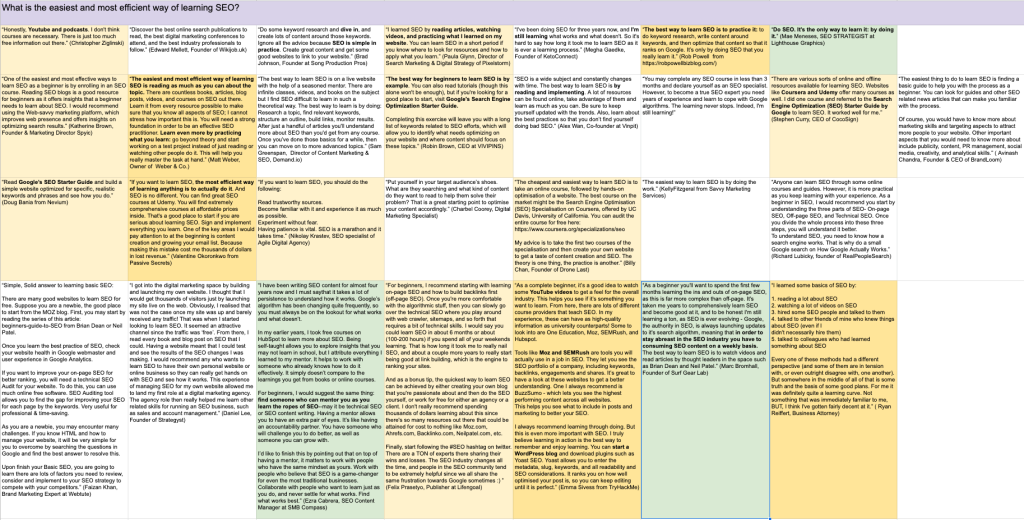
In-depth interview
An in-depth interview was held with a part-time affiliate marketer who is a marketing student. The interview aimed to uncover the challenges faced by beginners in learning and working with SEO. The obtained insights were instrumental in developing the digital concept.
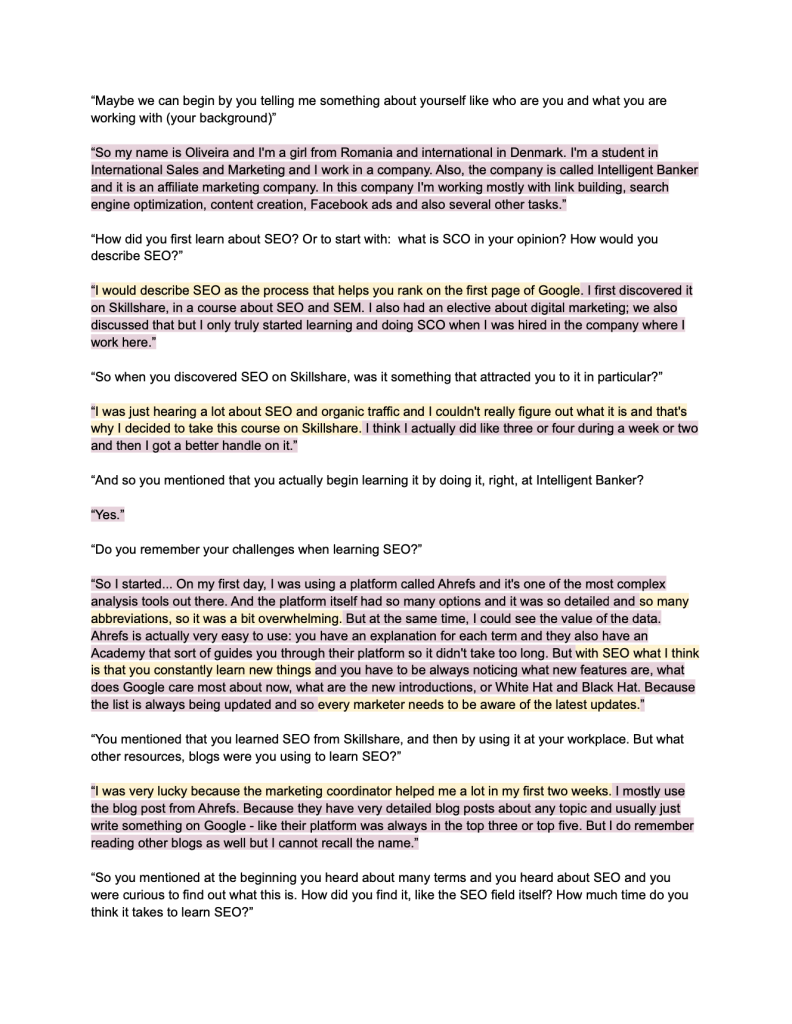
Survey
In addition to HARO and in-depth interviews, a survey was conducted to gauge newbies’ understanding of Search Engine Optimization and identify challenging SEO practices.
Most survey participants were students with backgrounds in marketing or related fields, indicating some prior knowledge of SEO, as they wouldn’t have pursued it otherwise.
- 73.3% of the respondents have encountered difficulties in understanding how SEO works
- 86.7% of the respondents would like to use an app to help them learn SEO
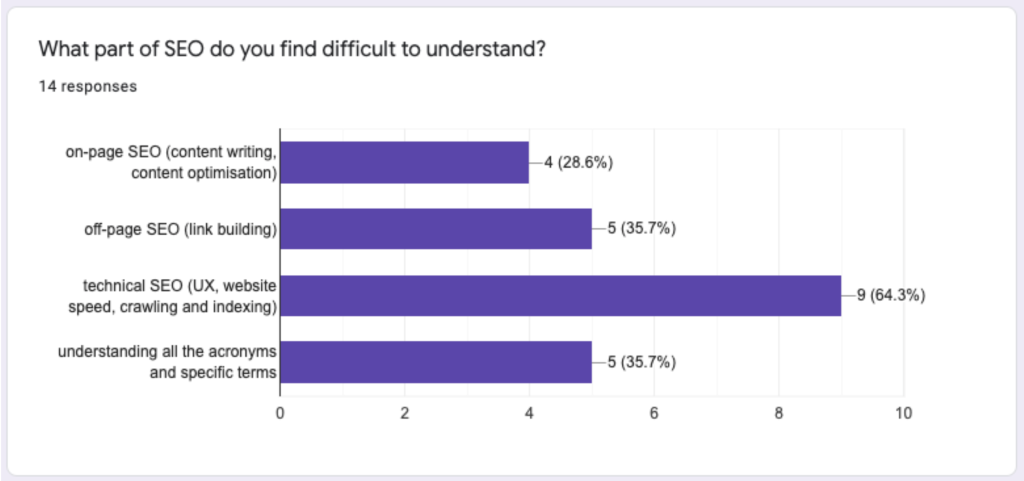
Competitive research
I conducted competitive research to assess Morningscore’s value proposition compared to other SEO tools. Additionally, studying how other SEO companies teach SEO is essential for developing Morningscore’s SEO Learning Station.
Morningscore sets itself apart in the crowded world of SEO tools by offering a beginner-friendly, gamified all-in-one solution. Unlike competitors like Ahrefs and SEMrush, Morningscore makes it easy for beginners with little to no prior knowledge to get started quickly.
Competitive research showed that no SEO tool offers a dedicated SEO learning app. While companies like Ahrefs provide SEO-related content through blogs, YouTube, and courses, Morningscore has the chance to pioneer a new approach to SEO learning with an on-the-go, enjoyable, and user-friendly app.
Findings from the competitive research
Morningscore’s learning app competes indirectly with online courses and traditional marketing education. It offers a unique approach to SEO learning by providing beginners with essential overviews, step-by-step guidance, and key terminology.
Inspired by successful apps like Duolingo, Google Primer, and Grasshopper, the Morningscore learning app leverages gamification for effective learning, analyzed for their gamification elements, information presentation, onboarding process, and user engagement strategies.
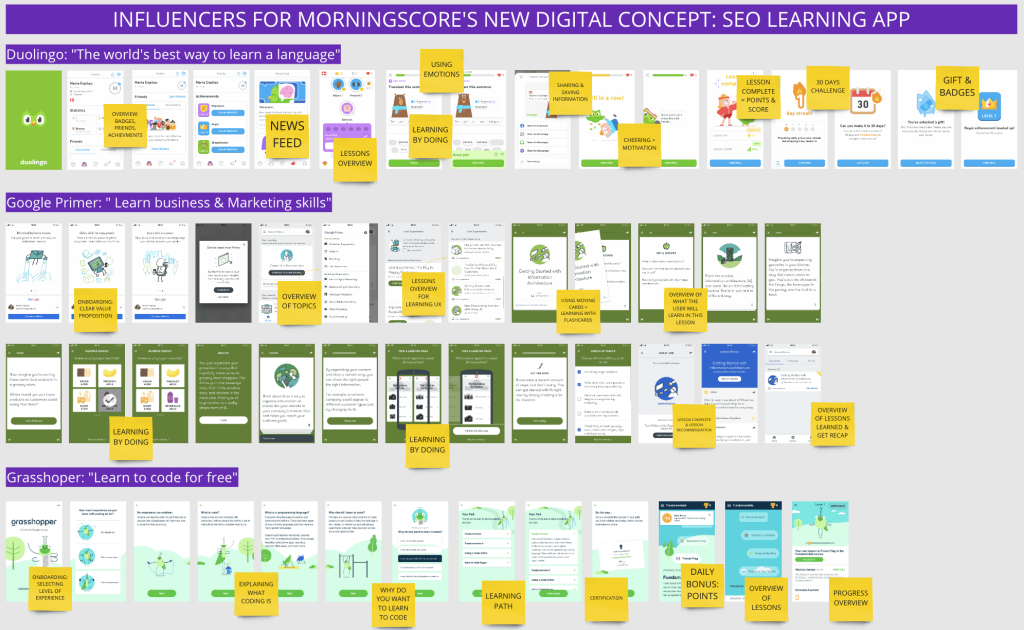
Define
Affinity Map
Affinity mapping was used to synthesize both primary and secondary data, allowing for a clearer understanding of the key takeaways from the research. These insights served as the foundation for ideating the new digital concept. The data was organized into distinct topics, each represented by specific colors at each level of affinity mapping:
- SEO beginners have a basic understanding of SEO but find the process overwhelming.
- The most challenging aspects of SEO are technical SEO, off-page SEO, and on-page SEO.
- Learning SEO basics and specific terms is a primary goal for beginners.
- Learning by doing is an effective method.
- Finding a mentor and being part of an SEO community is crucial for becoming an SEO specialist.
- SEO is an ongoing learning process, requiring staying updated with the latest news and search engine changes.
- Gamification makes the learning and practice of SEO enjoyable and straightforward.
Value Proposition Canvas
This method helped me assess how Morningscore meets customer needs. I used the Value Proposition Canvas to brainstorm a new digital concept for SEO beginners, marketing students, and small businesses with no SEO experience.
Morningscore has an SEO tool and a blog but doesn’t fully help SEO beginners. The Canvas showed that a dedicated learning app could simplify SEO for beginners, reducing overwhelm.
SEO beginners have functional, social, and emotional needs, including easy SEO learning, staying updated with SEO news, finding mentors, obtaining SEO certification, being part of the SEO
community, and enjoying the learning process without feeling overwhelmed. The new app meets these needs, making SEO enjoyable and simple.
Jobs To Be Done
By utilizing the Jobs to be Done framework, I gained insights into why people use the SEO Learning App. This approach is centered around the idea that people “hire” a product to fulfill a specific job or task. Consequently, I addressed functional, social, and emotional jobs when analyzing the customer profile for Morningscore. For each type of job, a statement was created.
- Functional job statement: SEO beginners need an efficient and enjoyable way to learn SEO by gaining an overview of the process, understanding specific terms, and applying what they learn.
- Social job statement: SEO beginners need to stay updated on the latest SEO news, find a mentor, engage in the SEO community, obtain SEO certification, and establish a professional identity.
- Emotional job statement: SEO beginners aim to achieve professional self-actualization through learning, avoid feeling overwhelmed by the vast SEO information, and gain confidence in their SEO knowledge.
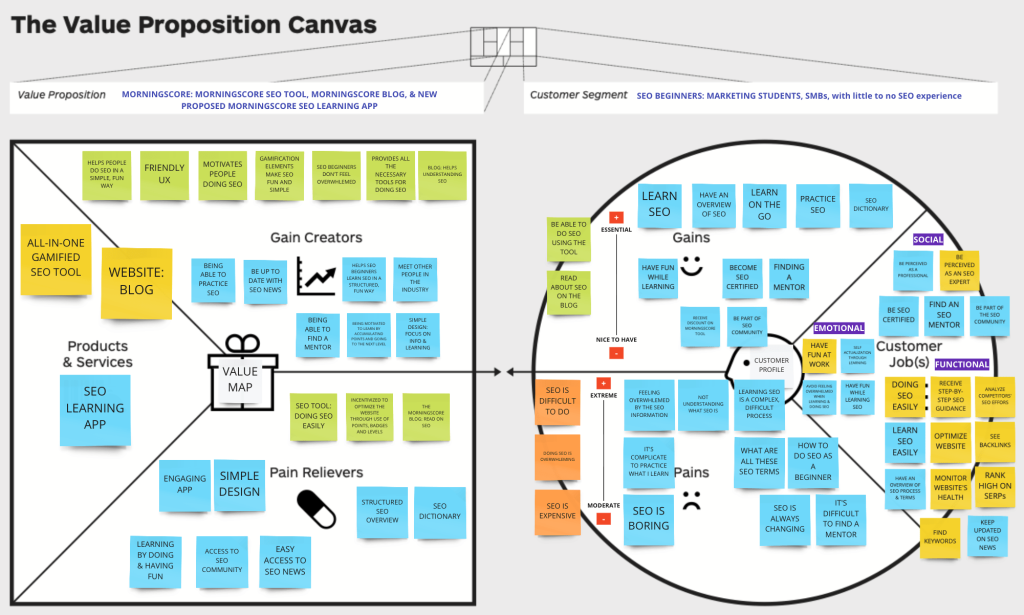

Persona
In this project, I crafted a persona to represent the specific target audience: SEO beginners. While fictional, this persona was built upon insights gleaned from primary and secondary data during the Discover phase.
Creating this persona proved invaluable during the ideation and development of the new digital concept for Morningscore, as it facilitated design decisions by guiding me to consider what the persona would prefer and find user-friendly.
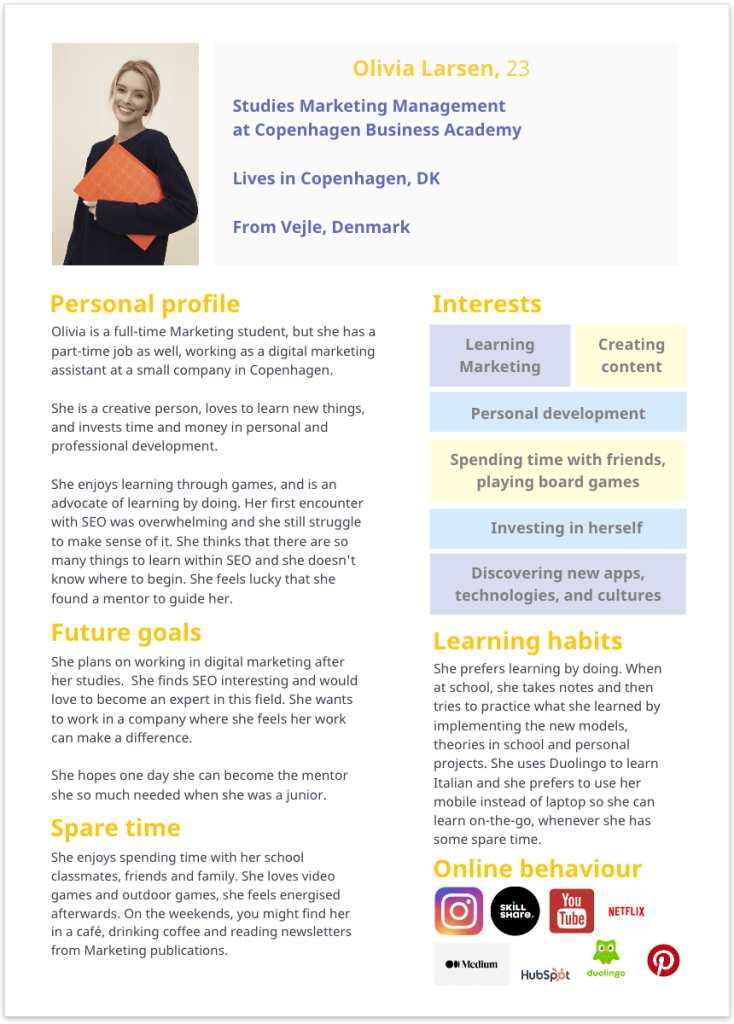
Develop
Sketches
Sketching played a crucial role in the design process, serving two primary purposes: visualising the discoveries made during the Discover phase and brainstorming potential solutions to the main problem—how Morningscore can help beginners learn SEO in an engaging and effective way, ultimately converting them into customers.
Through sketching, I visualised various aspects, including:
- the onboarding process
- how users select their learning path
- how users can learn and practice SEO
- the option to access an SEO glossary
- the option to become part of the SEO community
- and staying updated with relevant SEO industry news
Moodboard
Creating a mood board was a crucial step in the design process. It allowed me to visualize and express the desired overall vibe for the app. By combining various images and text, I aimed to evoke a sense of:
- Eagerness to learn SEO.
- The convenience of on-the-go learning.
- A feeling of belonging and community.
- Satisfaction upon completing lessons.
- Enthusiasm towards becoming SEO certified.

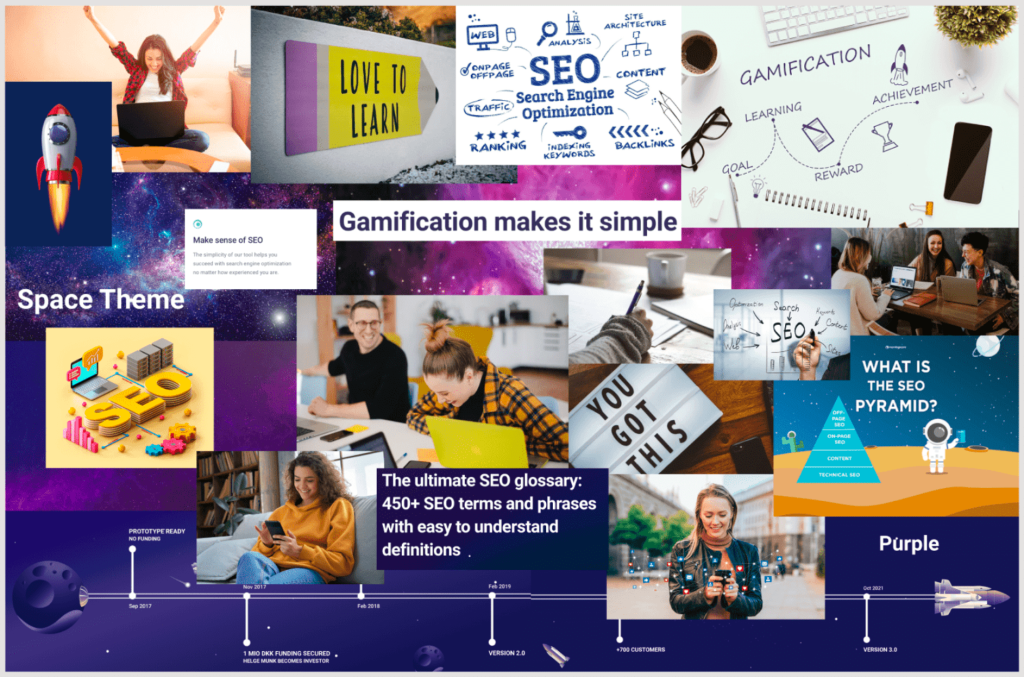
Style Tile
In addition to sketches and a mood board, the style guide is a crucial component of the design process.
It encompasses elements such as typography, the color palette, the logo, and space-themed assets, all compiled into a guide to assist in the creation of an aesthetically pleasing SEO Learning App.
You can find the style guide presented in the image below.
Information Architecture: the sitemap
To organize the content intended for the SEO Learning App and illustrate the user’s journey, I employed information architecture models, specifically the site map and user flow. These techniques were instrumental in establishing the content hierarchy and user navigation for the proposed concept.
A site map was developed as a visual representation of the SEO Learning App’s content, outlining the connections between various screens. This site map was invaluable in defining the content’s taxonomy by grouping related information together.
The user flow
I created a user flow alongside the site map to visualize the user’s journey within the SEO Learning App. This helped clarify the key features for the prototype.
The user flow is divided into two parts. The first part represents the path a new user takes, including their onboarding process and the choice of their starting learning level.
For an
existing user, the user flow highlights options to continue their learning by completing additional SEO lessons, earning more points, advancing levels, monitoring progress, and engaging with the
social leaderboard. Creating the user flow for an existing user also helps illustrate how instant feedback and rewards can motivate users to learn SEO.
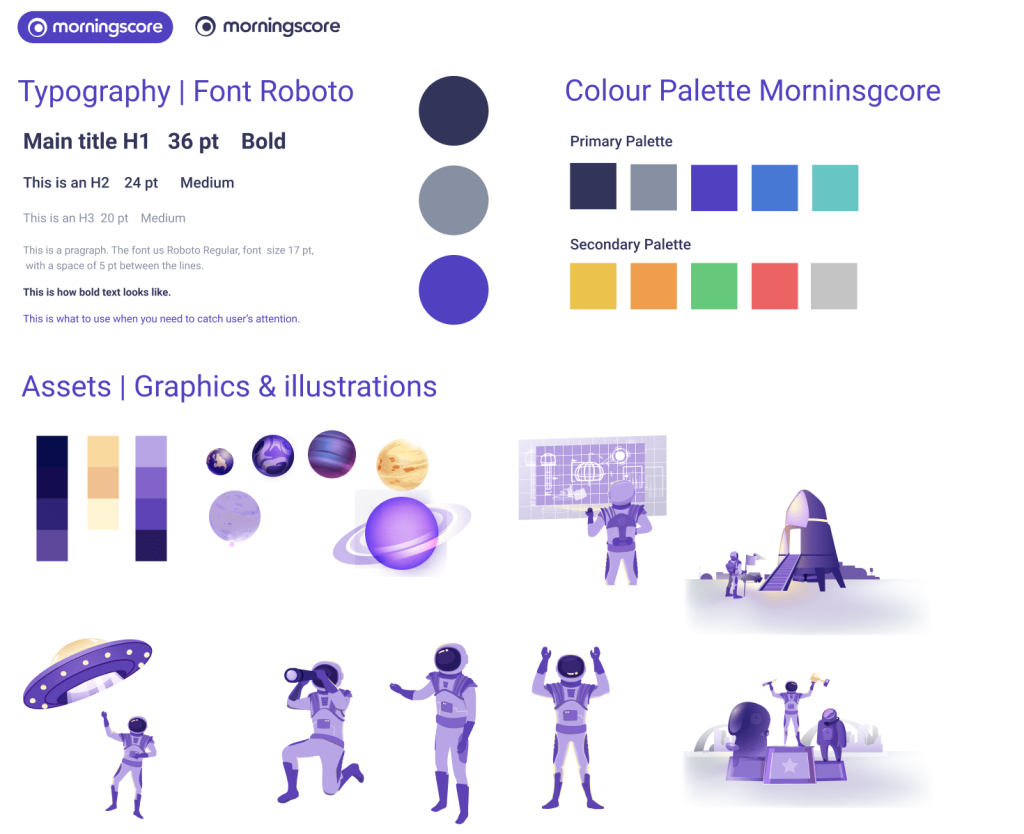
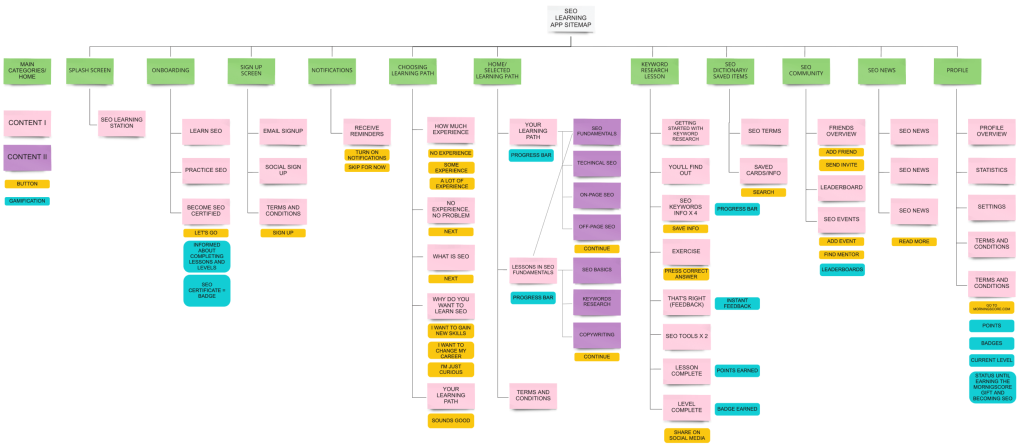
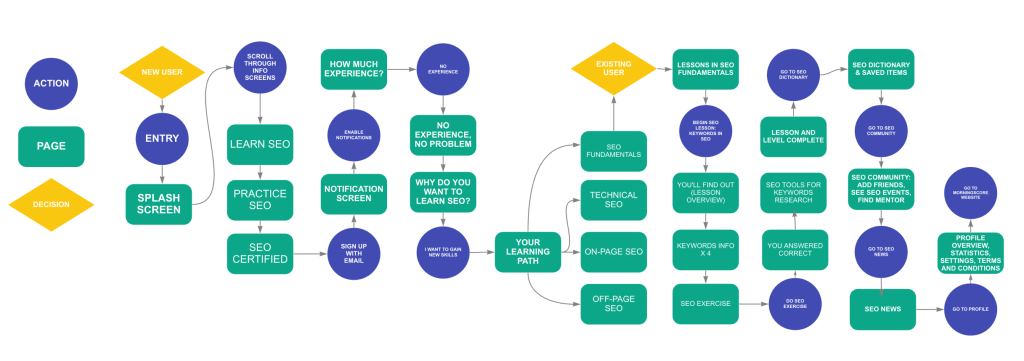
Gamification
Gamification is an integral part of the proposed digital concept, aimed at boosting user engagement. The new Morningscore digital product incorporates game-like elements such as points, badges, and leaderboards to motivate users to engage with the app.
Morningscore already uses gamification in its SEO tools by creating personalized missions for users to optimize their websites. Users earn points and progress through mission levels with each completed task, in line with the space-themed branding, all under the motto “SEO that takes you into space.”
The new concept, the Morningscore SEO Learning Station, maintains these gamification features. It includes points, levels, badges, and leaderboards to foster competition among users and encourage SEO learning. Furthermore, when a user accumulates 10,000 points, they gain two months of free access to Morningscore’s all-in-one SEO tool, an achievement recognized within the SEO community.
Werbach and Hunter's Game Element Hierarchy
Werbach and Hunter’s Pyramid of Game Elements guided the creation of an engaging gamified system for the SEO Learning Station App, focusing on three key game element categories: dynamics, mechanics, and components.
In terms of dynamics for my digital concept, I considered constraints, emotions, narrative, and user progression. Users must complete all SEO lessons to earn a certificate (requiring at least 65% completion for the Morningscore prize). The aim is to spark excitement, curiosity, motivation, and eagerness in users. The narrative unfolds during onboarding, outlining the path to mastering SEO and earning rewards, with user progression tracked using a progress bar and badges.
Mechanics involve user challenges (learning SEO and earning certification), continuous feedback (provided after exercises, lessons, or levels), and rewards (e.g., 2 months of free SEO tool access and SEO certification). These dynamics serve as intrinsic motivation, engaging users because they genuinely want to participate.
The game components align with my chosen dynamics and mechanics. Points, levels, badges, and leaderboards visually guide users in their SEO learning journey. Content unlocking enhances the sense of accomplishment and excitement.

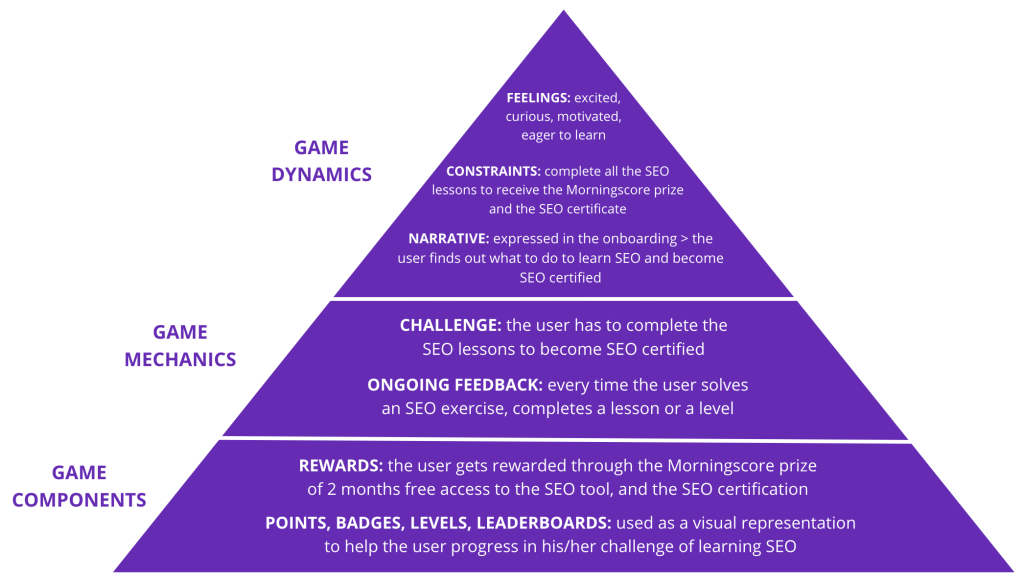
The Octalysis Framework for Gamification
The Octalysis Framework for Gamification, developed by Yu-Kai Chou, helped me analyze the eight core drives of human motivation within the proposed Morningscore concept. This analysis allowed me to identify which game elements are integrated into the system. Yu-Kai Chou emphasizes the significance of emotions and motivations in designing an engaging gamified system:
“Human-Focused Design remembers that people in a system have feelings, insecurities, and reasons why they want to or do not want to do certain things, and therefore optimizes for their feelings, motivations, and engagement.” (Chou)
As a result, I highlighted and expressed the core human motivation drivers used in the SEO Learning App, as shown in the picture below.
The Octalysis Framework emphasized the importance of motivating users to learn SEO by making them feel empowered, instilling a sense of ownership, setting epic goals, enabling task accomplishment, fostering skill development, and encouraging participation in a community and mentorship. The graphic also provides an overview of the gamification integrated into the newly proposed concept.
Bartle's Player Types
Bartle’s Player Types categorize players into four main archetypes: explorers, achievers, socializers, and killers. This framework helped me understand and describe the persona’s gaming preferences and characteristics within the proposed gamified concept.
The main player for the app exhibits qualities of an achiever (70%), a socializer (20%), and an explorer (10%). Additionally, I considered the player’s lifecycle, with a focus on onboarding, rules comprehension, and reinforcement for success, along with the potential for inviting friends to join.
Background: Olivia Larsen is a 21 years old Marketing student, living in Copenhagen. Olivia is a creative individual with a strong desire for personal growth and development. In addition to her studies and part-time job, she invests time and resources in expanding her skill set. She enjoys socializing with friends, playing board games, and exploring new places and cultures. Olivia aspires to become an expert in the field of marketing and is committed to learning and enhancing her skills in this area.
Gaming Preferences: When playing games, Olivia is highly motivated by the prospect of earning rewards, accumulating points, and progressing from one level to the next. She sets clear goals for herself, such as reaching a higher level, earning a gold badge, or completing challenging tasks. Olivia also demonstrates traits of an explorer, displaying curiosity about what lies beyond the current stage. She enjoys the thrill of discovery and the potential for uncovering hidden aspects of the game. Additionally, Olivia values social interaction within gaming environments, where she can exchange information and strategies with other players. She sees value in learning from others and actively engages in communication and collaboration.
By understanding Olivia’s gaming preferences and characteristics, I can tailor the gamification elements within the app to align with her motivations and interests, creating a more engaging and satisfying user experience.
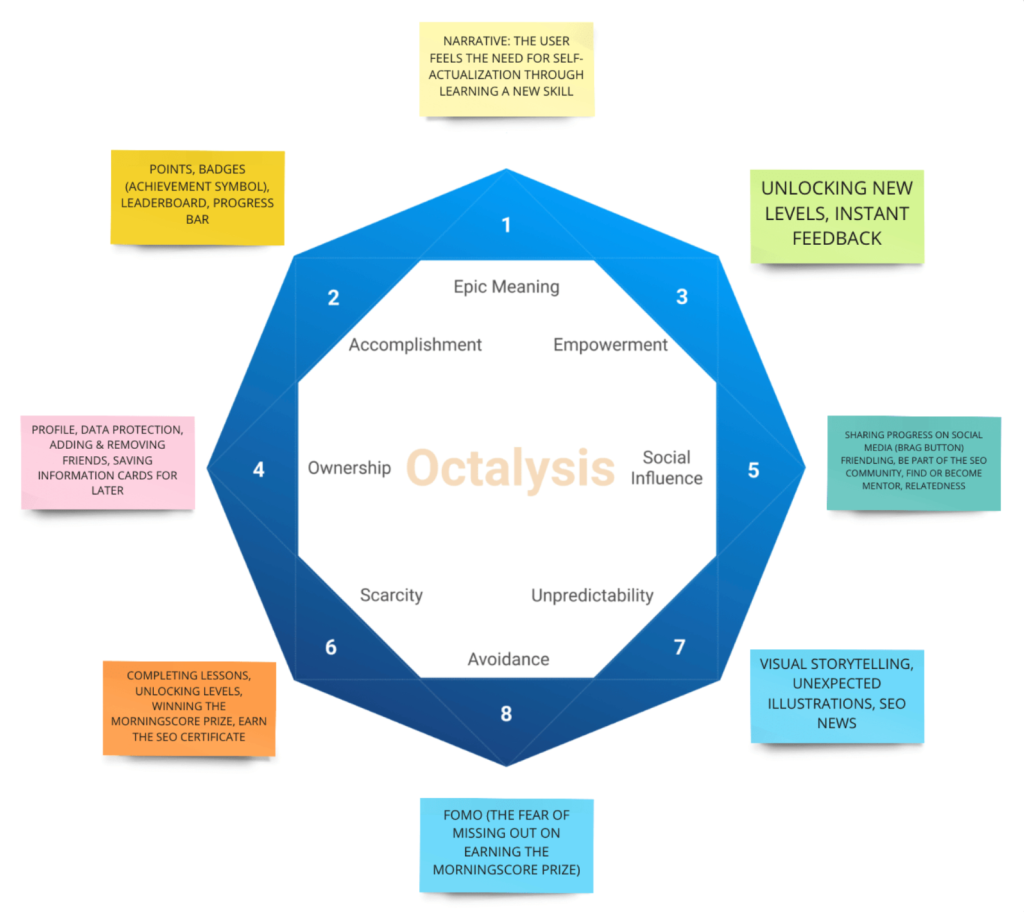

Lazzaro's Design Framework
I used Lazzaro’s Design Framework to assess the types of fun that could be incorporated into the SEO Learning App. According to Nicole Lazzaro, there are four types of fun:
- Hard Fun: Players derive enjoyment from challenges, strategy, and problem-solving.
- Easy Fun: Players find pleasure in intrigue and curiosity.
- Altered States: Players value the enjoyment derived from their internal experiences in response to the visceral, behavioral, cognitive, and social aspects of the game.
- People Factor: Players use games as a means for social experiences and relish opportunities for social bonding and personal recognition that arise from interactions with others.
By combining these elements within a gamified system, deeper player engagement can be achieved.
In the SEO Learning App, the primary type of fun integrated is “Hard Fun.” This is realized through the design of challenging SEO learning exercises that require problem-solving and critical thinking.
Additionally, “Social Fun” is also integrated into the app. It extends beyond learning and completing levels, fostering socialization within the user community. Users can connect with friends, monitor each other’s progress, and engage in interactions.
Furthermore, “Easy Fun” is present in the app through features that allow users to casually explore the latest SEO news, search for SEO terms, or complete quick SEO lessons, providing a more relaxed and enjoyable experience.
Fogg's Behavior Model
The digital concept was also crafted with Fogg’s Behavior Model in mind, which states that three elements—Motivation, Ability, and a Prompt—must align for a behavior to occur (Fogg, 2019). Therefore, the Fogg Behavior Model was applied to ensure that the app includes elements capable of motivating users to take action, specifically, to learn SEO.
The formula utilized is expressed as B = MAP (Behavior = Motivation × Ability × Prompt) (Fogg, 2009). In this context, the desired behavior from users engaging with the new Morningscore digital concept is to learn SEO by completing lessons, sharing their achievements with friends (promoting the concept), and potentially trying out the Morningscore SEO tool as customers. Consequently, the app incorporates specific elements designed to encourage learning behavior among users. As a result, users will:
- Be Motivated: Users will be driven to use the Morningscore SEO Learning App because they can achieve their learning goals (anticipatory motivation), track their progress in completing SEO lessons (sensational motivation), and earn the Morningscore prize while becoming SEO certified (altruism effect).
- Have the Ability: The app is designed to facilitate the learning of SEO with its user-friendly interface and personalized content tailored to the user’s experience.
- Be Triggered: Users will be prompted and reminded to take action and learn through push notifications, serving as triggers. Moreover, users will be assured that anyone, regardless of their prior experience, can learn SEO (facilitator as a trigger).
The application of Fogg’s Behavior Model within the SEO Learning App incorporates these elements to encourage and facilitate user engagement in learning SEO.
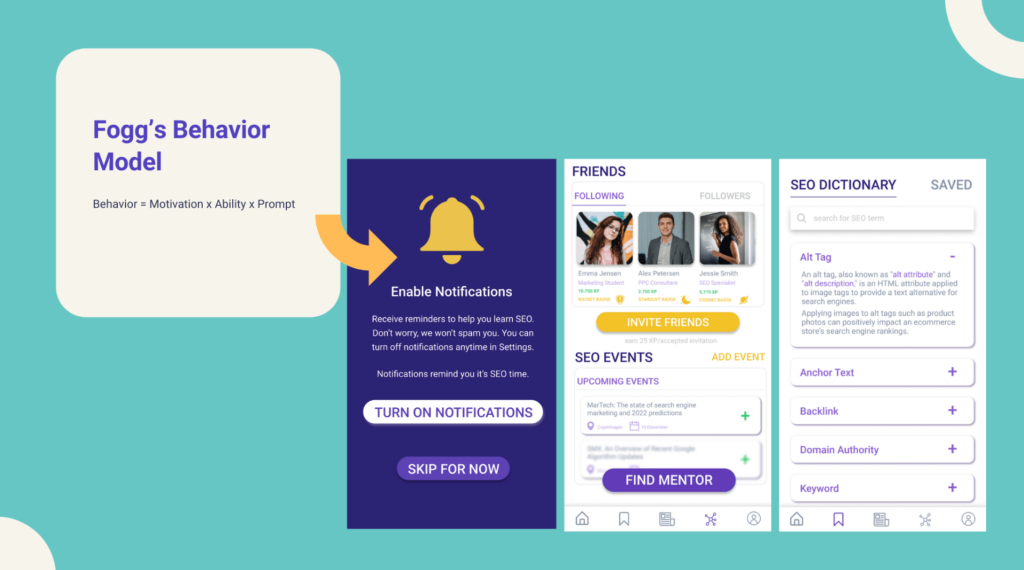
Test
Heuristic Evaluation
A heuristic evaluation was employed to identify and address usability problems within the app, incorporating the findings into the prototype iteration. This evaluation method is used to identify usability issues in a user interface design, allowing them to be addressed as part of an iterative design process.
The primary findings resulting from the heuristic evaluation are:
Lack of a Back Button: Users may experience frustration due to the absence of a back button, particularly when navigating through the learning process. This issue can hinder the user’s ability to backtrack or revisit previous sections.
Crowded Design of the SEO Community Page: The design of the SEO community page was deemed overly crowded, potentially overwhelming users with an excessive number of choices and information. This can lead to difficulties in decision-making and navigation within the community section.
To address these identified issues, the design of the app was refined through an iterative process, incorporating insights from both the heuristic evaluation and user experience testing. The goal is to ensure that users can navigate the app smoothly and avoid the aforementioned usability problems.
Usability Testing
Conducting UX testing was a crucial step in the development of the proposed app as it helped identify design issues and gain insights into user behavior and preferences.
The UX testing process involved the following steps:
- Defining tasks for participants to perform within the prototype.
- Recruiting a minimum of 5 participants to test the app.
- Observing how participants completed the tasks and collecting their feedback.
It’s worth noting that testing with 5 participants is typically sufficient to uncover a significant percentage (75-80%) of usability problems.
The main findings from the usability tetsing are that:
- users appreciate the use of gamification in the app
- the SEO news section brings value to the user
- the space theme used across the app makes the experience funny
- the No experience, no problem page and its motivation message resonates with the SEO beginners, reassuring them that anyone can learn SEO
- the lack of a back button was noticed by a user
- the yellow icons used meant to be badges in the social leaderboard was confusing, and it required a redesign
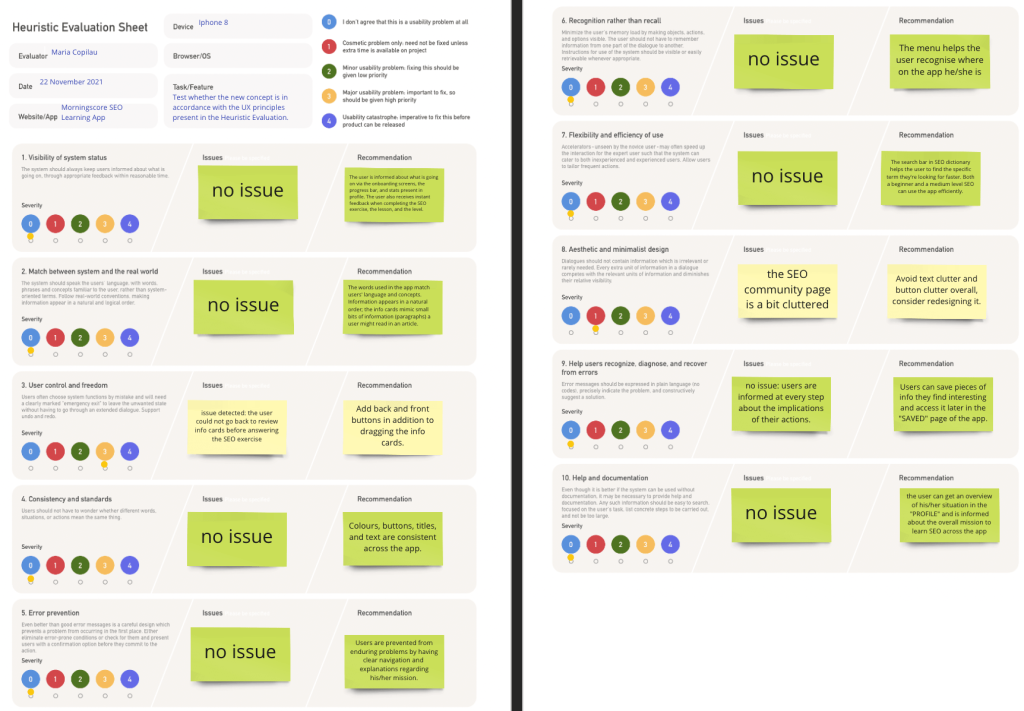
Deliver
The figma Prototype

The SEO Learning App was developed through the creation of a prototype using Figma. This prototype showcases the app’s key features, including how users can learn and practice SEO, access SEO news, seek mentorship, and become part of the SEO community.
Game elements were strategically integrated into the concept to engage and motivate users. Additionally, the space theme, consistent with the Morningscore ecosystem, was implemented to maintain brand uniformity and contribute to the overall user experience within the app.
The whole Figma prototype can be accessed
here.
Morningscore aims to help beginners learn SEO in an engaging and efficient manner while also attracting and converting them into customers.
The SEO Learning App, designed using gamification elements, encourages user engagement through point collection, leveling up, and the opportunity to become SEO certified, unlocking two months of free access to the SEO all-in-one tool. This concept addresses the core problem of helping SEO beginners learn while simultaneously achieving business goals.
Metrics and KPIs
To measure the success of the SEO Learning App in relation to the business goal of increasing brand awareness and attracting more customers, several key performance indicators (KPIs) have been identified:
- Social Media Engagement: The app’s success will be measured through users’ social media interactions. Comments, likes, and mentions of Morningscore, along with the hashtag #learnSEOwithMorningscore, will indicate increased brand awareness.
- Engagement Rate: A target of a 20% increase in the engagement rate on social media platforms will serve as a key performance indicator.
- Follower Growth: The app’s impact on brand awareness will be gauged by a minimum of 500 more followers per quarter on social media platforms.
- App Downloads: Achieving a minimum of 1,000 app downloads per quarter will be another indicator of the app’s success in attracting users and potential customers.
To measure the overall performance of the concept, several analytical tools will be utilized:
- Instagram Analytics: This tool will help track social media engagement and follower growth on Instagram.
- Facebook Analytics: Facebook Analytics will provide insights into user interactions and engagement on the platform.
- Google Analytics: Google Analytics will be used to monitor website traffic and referral sources, tracking the app’s impact on driving qualified leads to the website.
- App Analytics: App-specific analytics tools will offer data on user behavior, engagement, and usage patterns within the app.
- HubSpot Analytics: HubSpot Analytics will help track the conversion of app users into customers and monitor their journey through the sales funnel.
By analyzing data from these tools, Morningscore will be able to assess the impact of the SEO Learning App on brand awareness, lead generation, and customer acquisition, helping to evaluate the success of the concept in achieving its business goals.
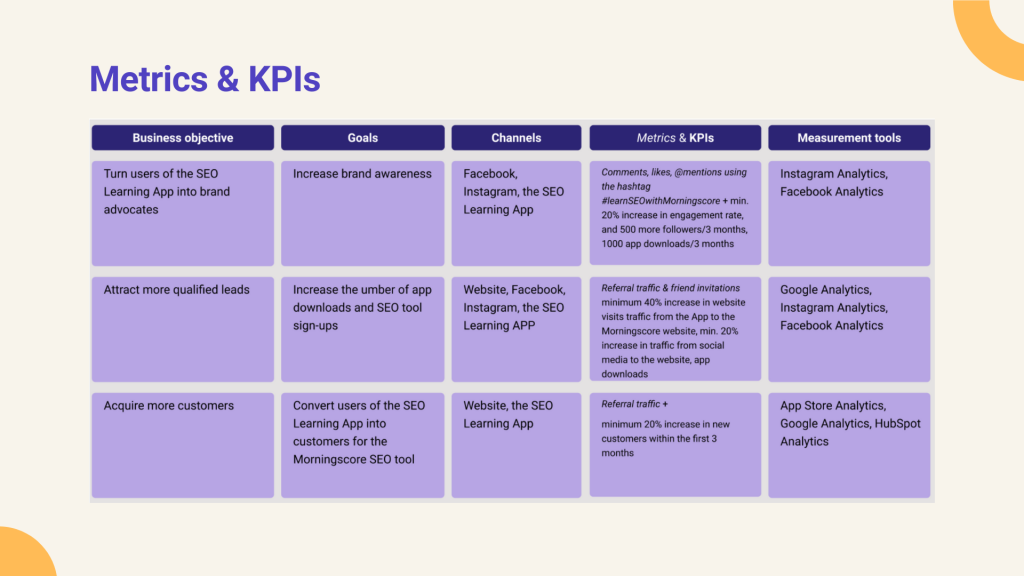
Explore other projects
UX DESIGN PROJECT
Billigblomst is a popular Danish garden center chain. The goal of this individual project was to improve the buying user experience on their website. Design project completed during the Graphic Design & UX/UI course at KEA.
UX DESIGN PROJECT
Creating an app for Plantorama’s customers that combines plant identification and monitoring through a virtual recognition model in IBM Watson Studio
Contact
© 2023 Maria Copilau – UX Designer | All rights reserved
